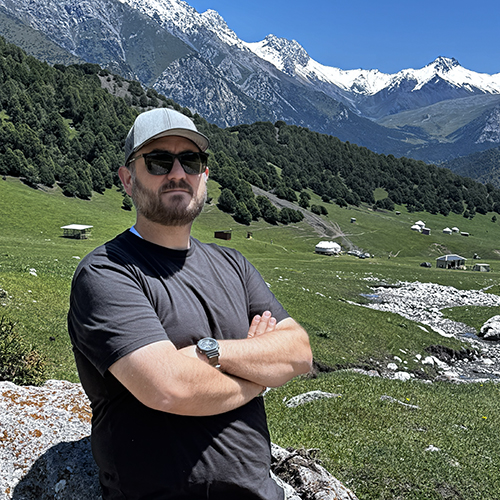Is anybody else out there? Are there other planets that resemble the third rock from the sun?
Scientists in the Virtual Planetary Laboratory (VPL), funded by the NASA Astrobiology Institute, are searching for answers to such age-old questions. Their research involves looking for clues by creating virtual planets that interact with virtual stars through computer modeling. Victoria Meadows, UW professor of astronomy, heads the laboratory.
The VPL, which includes 55 scientists at 18 institutions, was created to dovetail with NASA spaceflight missions that study the far reaches of the universe. Kepler, launched in March 2009, is one such mission; Terrestial Planet Finder (TPF), the impetus for VPL, is another that is still to happen (if funding becomes available). VPL’s research will help scientists recognize Earth-like planets from information captured on these missions.
Meadows says most of the 453 planets that have been discovered outside our solar system are “gassy things you wouldn’t be able to stand on,” but more planets with rocky surfaces are now being identified. ”That raises a huge question,” says Meadows. “If we find an Earth-like planet in orbit around another star, how will we tell if it can support life?”
VPL scientists hope to answer that question through computer models. The goal is to simulate plausible environments that would be habitable, and identify the spectra—that is, the range of light—that might emanate from such a planet. Then, as NASA spacecraft gather information about distant planets’ spectra, scientists would be better able to identify those that are potentially habitable.
As for the spectra of our own habitable planet, UW graduate student Ty Robinson has developed a 3-D spectral model of Earth, to explore how observations of the changing color and brightness of the entire planet during its orbit can be used to identify the presence of clouds and oceans. (See image at right). Meadows believes this information will be tremendously helpful in determining which telescopic observations to make to detect liquid, a necessary requirement for life, on the surface of an extrasolar planet.

Another UW graduate student, Nick Cowan, has developed a technique to create the first maps of extrasolar planets. “Extrasolar planets will always be points of light,” says Meadows. “We can’t directly see details on them. This will help us figure out how to map a planet from that light. Over time, as the color of the planet changes (due to the planet’s rotation bringing different parts of the surface into view), we can then map, crudely, where areas with different characteristics—like continental masses, oceans and ice—are on the planet.”
Of course other planets, even habitable ones, are likely to have characteristics quite different from those on Earth. To model possible scenarios, researchers start with Earth, then alter variables and study the impact. “We ask, ‘What else might be plausible, without defying the laws of physics and chemistry?’” says Meadows. “How about a planet without oxygen? Or a planet orbiting a different type of star?”
Through computer modeling, researchers might replace our sun with a star that outputs more radiation, which leads to chemical changes in the atmosphere. Or alter the planet’s orbit, resulting in climate fluctuations. “We always make sure a model can identify what would happen on Earth first,” says Meadows. “Then we start using it in a predictive mode to model more alien environments.”
The team also has been studying the Earth’s past, when it supported only microbial life. “The early Earth is an example of a habitable planet but one that looks completely different than modern Earth,” says Meadows. “A large fraction of our group studies what that alien planet—which is what the early Earth was—would look like through a telescope. That’s important since stars in our local solar neighborhood are very different ages. You want to be able to say, ‘Okay, this is an Earth-like planet. It doesn’t look like modern Earth, but it has a similar environment to what the Earth had about two million years ago.’”
Because of the many variables required to model the interaction between a planet and its star, the team includes not just astrophysicists but also geologists, chemists, microbiologists, oceanographers, and others with specialized knowledge. Interdisciplinarity, says Meadows, is critical to this effort. “It’s not about any of us doing more than one thing well,” she explains. “It’s about being able to do one thing really well and then talking to team members in other relevant disciplines where you don’t know a thing about their field. It requires some courage.”
NASA is looking to the VPL to identify not only the characteristics of a potentially habitable planet but also the features of an effective space-based telescope. The team is trying to predict what telescopes are going to need to measure, where the pitfalls will be, and what conditions will be required to get the answers right.
“Supporting the NASA mission is what we’re ultimately trying to do,” says Meadows. “In the process, we’re doing neat science.”
For more about the Virtual Planetary Laboratory, visit VPL's website at vpl.astro.washington.edu.
More Stories

A Sports Obsession Inspires a Career
Thuc Nhi Nguyen got her start the UW Daily. Now she's a sports reporter for Los Angeles Times, writing about the Lakers and the Olympics.

Through Soil Science, an Adventure in Kyrgyzstan
Chemistry PhD alum Jonathan Cox spent most of 2025 in Kyrgyzstan, helping farmers improve their soil—and their crops—through soil testing.

The Public Impact of Private Cities
Geography major Edwin Bai has researched private cities, developed by individuals and corporations, that "take the libertarian idea of low government regulation to the maximum."